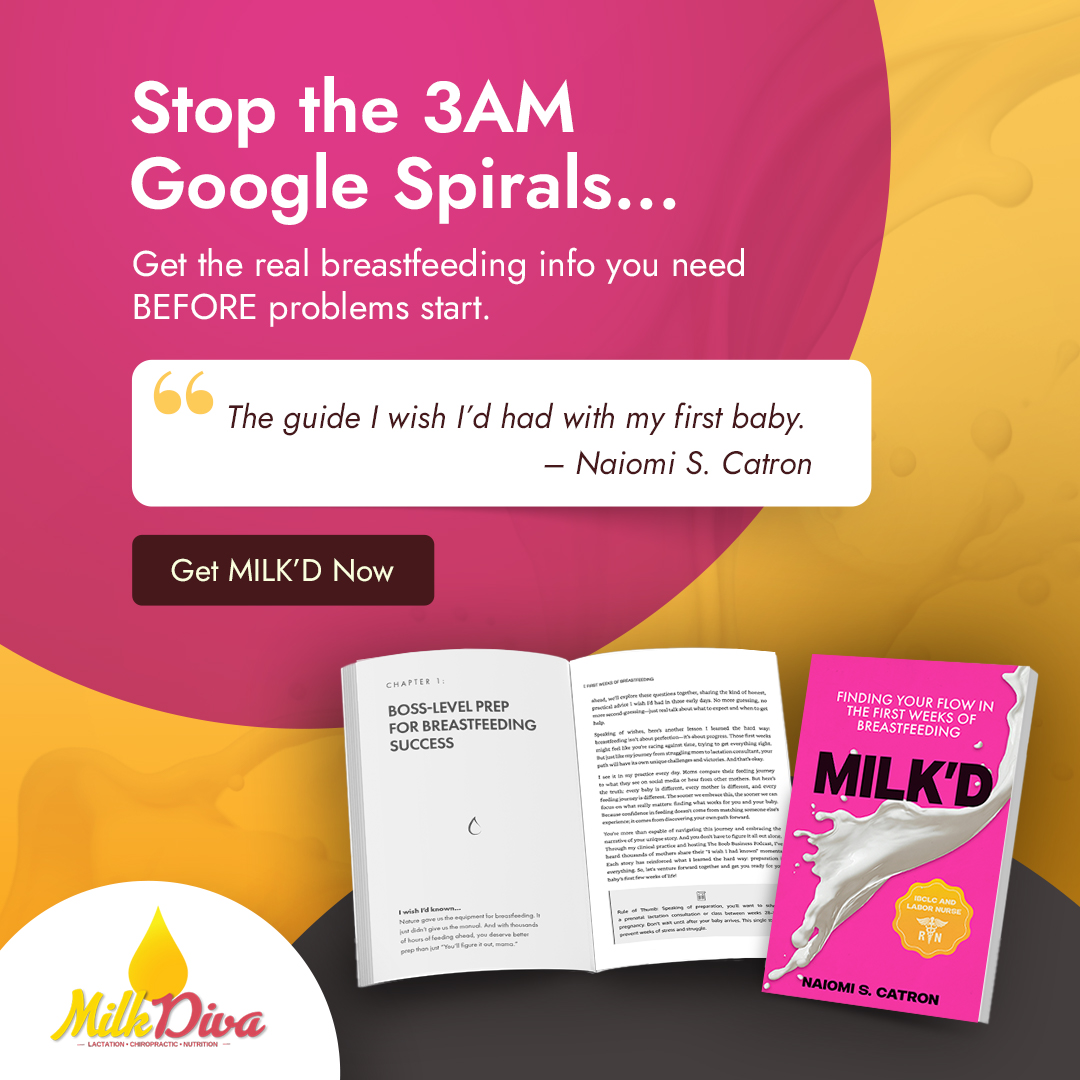
Sometimes breastfeeding is uncomfortable for the first week or so. This mild tenderness happens only at the beginning of a feeding and subsides as the nursing session continues. It usually resolves without treatment after the second week. Being especially careful with positioning and latch during this time can keep a mom from experiencing blisters or cracks on the nipple, which can be quite painful and can prolong the healing time needed before breastfeeding is pain-free.
Pain beyond the first two weeks, or pain in those first weeks that is severe or is causing nipple damage, is not normal and should be thoroughly investigated by a lactation consultant. Pain lasting longer than two weeks is considered persistent pain. Researchers have found that women with persistent pain wean earlier than those who breastfeed pain-free. When mothers stop breastfeeding in the first month, around one-third say pain or nipple damage is the reason (Berens, et al, 2016). Even when mothers get professional support, almost half still have persistent pain (Lucas, et al, 2019).
What could be causing the persistent pain in breastfeeding?
- Unresolved engorgement
- Oversupply
- Plugged duct
- Mastitis
- Breast abscess
- Improper positioning or latch
- Ankyloglossia (tongue-tie)
- Flat or inverted nipple
- Nipple bleb
- Bacterial infection
- Fungal infection (thrush)
- Dermatitis
- Vasospasm
- Poor pump fit
- Functional pain
- Myofascial pain
Listening to women and taking their pain seriously is one easy step lactation professionals can take to meet women where they are and help them move forward to a better breastfeeding experience.
For mothers and lactation consultants alike, finding the root cause for persistent pain can be trial and error. And it can take a while, which is often discouraging. Typically it starts with making sure the baby is positioned well, has a good latch, and does not have any oral anomalies that would cause nipple damage. If none of these adjustments help, exploring whether the pain is localized to the nipple and areola, or if it’s breast pain, would be the next step. Are there lumps, blisters, rashes, discoloration, or areas of broken skin? What has the breastfeeding mother done to self-treat (such as ointments, pumping, etc)? If she’s pumping, does the breast flange fit properly and are all the parts in working order? Answering these questions will help to narrow down the possible source for the pain.
Two tools for lactation consultants can really help with this. The first is the Academy of Breastfeeding Medicine (ABM) Protocol #26: Persistent pain with breastfeeding, which has a detailed outline for patient history and examination that can be an aid to sorting symptoms. The protocol then follows with descriptions of the possible causes and treatments. It’s available in English as well as six translations, and can be freely accessed online.
The second tool is a collection of algorithms put together by the University of North Carolina Lactation Program. This design is set up for use by healthcare providers in asking the right questions to get to the right diagnosis. But it’s certainly something a breastfeeding parent can look at, too, to get an idea of what might be causing the pain, especially if she doesn’t have easy access to a trained lactation professional.
Women’s experiences of painful breastfeeding need to be investigated further so quick diagnosis can be made and treatment started before weaning occurs. Women shouldn’t have to suffer through pain to provide their babies with breastmilk. Because pain is one of the top reasons for premature weaning, understanding how women perceive that pain and the act of breastfeeding cessation can help to tailor tools to individuals as well as to the whole population of nursing mothers.
Because cognitive behavioral techniques work to help manage pain in other areas of women’s health, Lucas, et al (2019) believe these can be adapted to decrease the number of women experience persistent pain and increase the number of babies who breastfeed longer. In their pilot testing of a Breastfeeding Self-Management (BSM) tool, they used smartphones and text-based communication to provide support and education about common breastfeeding challenges, including persistent pain. Results of their trial showed that the treatment group had significantly less pain at all points in the study compared to the control group.
Painful breastfeeding is often met with surprise – women aren’t expecting it to hurt as much as it does sometimes. And weaning due to pain is often accompanied by feelings of guilt and regret (Jackson, Mantler & O’Keefe-McCarthy, 2019). One of the biggest hurdles is that pain is subjective – what might be mildly annoying to one mom is excruciating to another. Listening to women and taking their pain seriously is one easy step lactation professionals can take to meet women where they are and help them move forward to a better breastfeeding experience. Successful breastfeeding often carries over into confidence with mothering, something all women deserve.
If you have more specific questions and would like expert advice from an IBCLC for your individual breastfeeding questions, check us out!
Subscribe to Diva Diaries, to get more helpful, current, evidence-based breastfeeding resources.
References:
Berens, P., Eglash, A., Malloy, M., Steube, A. M., & Academy of Breastfeeding Medicine. (2016). ABM Clinical Protocol# 26: Persistent pain with breastfeeding. Breastfeeding Medicine, 11(2), 46-53.
Berens, P. D. (2015). Breast pain: engorgement, nipple pain, and mastitis. Clinical obstetrics and gynecology, 58(4), 902-914.
Jackson, K. T., Mantler, T., & O’Keefe-McCarthy, S. (2019). Women’s Experiences of Breastfeeding-Related Pain. MCN: The American Journal of Maternal/Child Nursing, 44(2), 66-72.
Kent, J., Ashton, E., Hardwick, C., Rowan, M., Chia, E., Fairclough, K., … & Geddes, D. (2015). Nipple pain in breastfeeding mothers: incidence, causes and treatments. International journal of environmental research and public health, 12(10), 12247-12263






